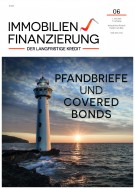Sie befinden sich hier: Home › Immobilien & Finanzierung › Themenschwerpunkte › Aufsätze › COVID-19: COVERED BONDS & MORTGAGES AS ESSENTIAL ELEMENTS FOR A SUCCESSFUL RECOVERY
Aufsätze
27.05.2020
PFANDBRIEFE UND COVERED BONDS
COVID-19: COVERED BONDS & MORTGAGES AS ESSENTIAL ELEMENTS FOR A SUCCESSFUL RECOVERY

Luca Bertalot, Foto: EMF-ECBC

Dieser Artikel ist Teil unseres Online-Abo Angebots.
Immobilien & Finanzierung, Ausgabe vom 29.05.2020, Seite 248
Aufsätze
4,50 €
2917